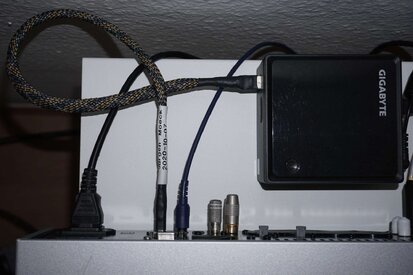Grayson Dere
Moderator
More
- Preamp, Processor or Receiver
- Integra DTR 7.8
- Main Amp
- Class D Audio: SDS-470CS
- Additional Amp
- Shellbrook Audio Hybrid Head headphone amp
- Universal / Blu-ray / CD Player
- Sony UBP-X700
- Streaming Subscriptions
- Origin Live Aurora MKIII turntable
- Front Speakers
- Vandersteen Model 2
- Subwoofers
- SVS PB-2000
- Other Speakers
- Grado SR 325is headphones
- Screen
- Elite Screen 120"
- Video Display Device
- JVC DLA-X75
Like some of us I've been thinking lately about how to improve the sound quality from my 2-channel digital streaming system. It sounds great already but I have a habit of trying out new things to squeeze out the last ounces of quality..if it exists : )
Does anyone have experience using external hardware devices that claim to get rid of digital jitter and other computer related noise? To tell you the truth I don't actually know what jitter or computer noise sounds like but when I put my ears an inch from the speaker drivers and have a music track on pause I don't hear anything but silence. Is jitter and digital noise something only audible during music playback? I'm curious.
I was checking out this product when I started questioning my system: https://ifi-audio.com/products/nano-igalvanic3-0/
Thanks for all your thoughts! : D
Does anyone have experience using external hardware devices that claim to get rid of digital jitter and other computer related noise? To tell you the truth I don't actually know what jitter or computer noise sounds like but when I put my ears an inch from the speaker drivers and have a music track on pause I don't hear anything but silence. Is jitter and digital noise something only audible during music playback? I'm curious.
I was checking out this product when I started questioning my system: https://ifi-audio.com/products/nano-igalvanic3-0/
Thanks for all your thoughts! : D








